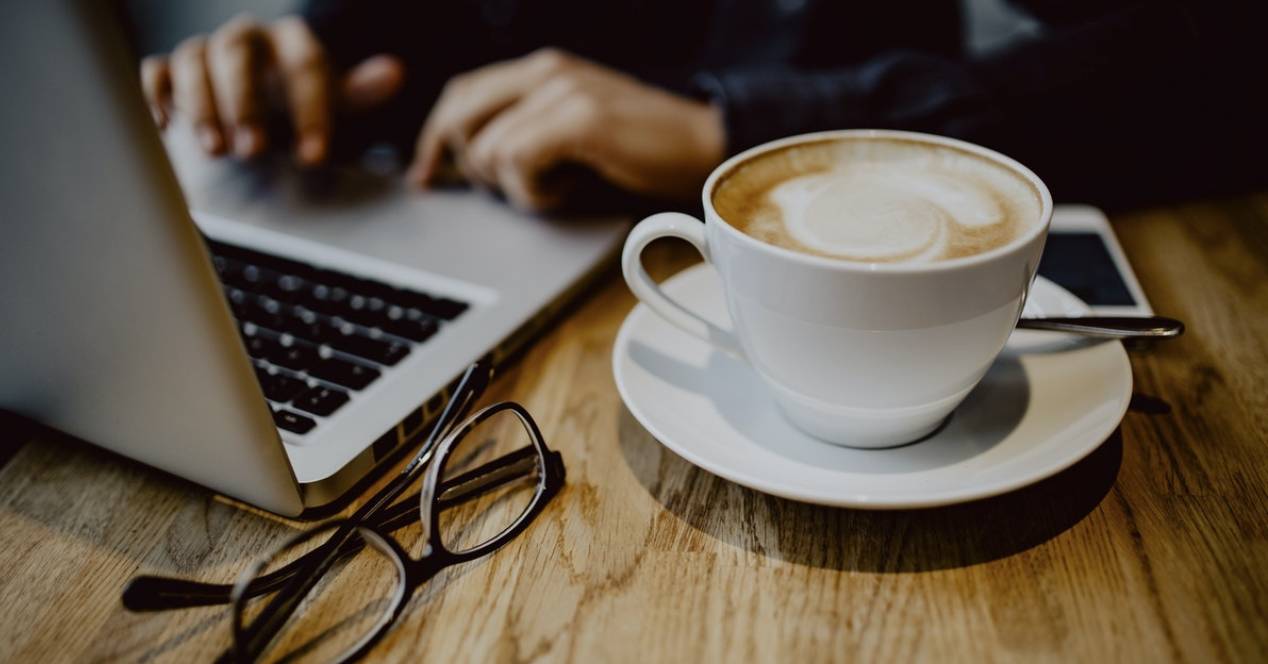
If you're like us, it's normal to start your day by stumbling directly into the coffee pot. That can give you the invincible boost you needed to send emails, make your to-do list, and finish a HIIT workout. However, you may need 2, 3, or even more cups of coffee to get the same alert feeling. So how do you do a caffeine reset?
This is not an unusual phenomenon, and there are actually processes that occur in your body that result from the power of caffeine.
What is caffeine tolerance?
Someone who hasn't had caffeine in a long time, or never has, is said to have zero tolerance for caffeine. This substance is foreign to the body, since the body does not produce it naturally; but it is not an essential nutrient either.
When we have zero tolerance for caffeine, drinking it can produce feelings of euphoria, heightened mental awareness, and positive emotions.
Now, when we drink the same amount of coffee as yesterday, this same amount will produce the effects mentioned above, although to a lesser degree. As a person continues to drink the same amount of caffeine per day, the body becomes tolerant and these positive effects will be significantly reduced over time. In fact, if we have an intolerance, we will feel normal when we drink it.
Instead of increasing alertness, we may notice that we don't feel "normal" until we've had our daily dose of caffeine.
Why does the effect of caffeine wear off?
Caffeine makes you feel bright-eyed at how it affects substances in your body.
Because it promotes alertness, caffeine is known as a stimulant. In particular, it acts as a adenosine receptor antagonist. That means it blocks adenosine, a substance in your body that promotes drowsiness and prevents you from falling asleep. Caffeine can also increase reaction times, mood, and mental performance.
Adenosine receptors in your brain play a critical role in sleep, arousal, and cognition. Caffeine temporarily blocks these receptors, creating the effect of feeling more alert, less tired, and more energetic.
It can block up to 50 percent of these receptors when consumed repeatedly throughout the day, per a November 2012 study in the Journal of Nuclear Medicine.
However, the natural stimulant works best when you take it intermittently, from time to time, rather than religiously every morning. Daily caffeine consumption makes it less effective because your body develops a tolerance to her. Although it can help improve your concentration and energy, the effects of caffeine will be short-lived if you drink large amounts each day.
Unfortunately, by regularly drinking caffeinated beverages, the brain compensates by creating more adenosine receptors, allowing more adenosine molecules to bind to them. Your own biology can also affect how quickly you develop tolerance to caffeine.
People have different tolerances and responses to caffeine, which is partly influenced by genetics. Regular caffeine consumption can promote caffeine tolerance in some people, so the side effects of caffeine may lessen over time. Therefore, it is necessary to consume a larger amount to feel the same stimulating effects.
Is taking more quantity the solution?
Of course, you can't keep drinking more cups of coffee until you reach your beloved state of happiness. Up to 400 milligrams of caffeine per day appears to be safe for most healthy adults. That's about the amount in 4 cups of coffee.
If you consume more than that, experts say it can have unpleasant (and probably familiar) side effects such as:
- Headache
- Insomnia
- Nervousness
- Irritability
- Frequent urination or inability to control urination.
- Fast heartbeat
- muscle tremors
Caffeine tolerance is acquired over time. From one study, complete tolerance was found to occur after 1 to 4 days among study participants. To reach this conclusion, the researchers considered factors such as blood pressure level, heart rate, and plasma epinephrine levels.

Caffeine reset benefits
Not much research has been done on the subject of tolerance to daily consumption. However, the researchers followed the effects of tolerance in 11 healthy, active people in a January 2019 PLoS ONE educational diagnostic.
By taking a break, you are allowing adenosine receptors reset at a lower level, making your tolerance lower and the effects feel more powerful.
Participants ingested about 200 milligrams for 20 consecutive days in one treatment and a placebo for 20 days in another treatment. Compared to placebo, caffeine significantly increased peak cycling power during the first 15 days. However, after that point, the performance-enhancing effect diminished.
Meanwhile, not drinking often can improve mental alertness and mental performance, according to a March 2013 study in the journal Psychopharmacology. Cutting back on caffeine can give the body a chance to become less tolerant of it.
How to quit caffeine?
However, you shouldn't stop cold turkey: stopping abruptly when you've developed a dependency on it can cause withdrawal symptoms such as headaches, tiredness, difficulty concentrating, nausea, muscle pain, and irritability.
The more caffeine you consume, the worse your withdrawal symptoms will be. They can start 12 to 24 hours after your last dose of caffeine and can last anywhere from two to nine days.
Gradually taper off by keeping track of how much you're drinking and decrease that amount slightly each day. You can also try decaf coffee if you love the taste but don't want all the caffeine. Try to cut out drinks with this substance later in the day to allow your body to get used to less, which will lessen potential withdrawal effects.
If we want to make it more drastic, we can substitute the number of cups we drink with tea. Thus, instead of six cups of coffee, we could have three cups of coffee and three cups of tea. We will do this until we can cut it completely.
Ways to Boost Energy Without Caffeine
If we love that feeling of being alert, that's okay! There are many other ways to feel energized without relying on caffeine.
Combining protein and fiber
What we eat can make a big difference in your energy levels. Combine lean protein with a fiber-rich carbohydrate to provide long-lasting energy. Some examples include low-fat yogurt with fruit, apple slices with peanut butter or carrots, and string cheese.
In this way, we will not only be doing a caffeine reset, but we will also consume good quality nutrients.
make a smoothie
A cool, fruity drink will not only give you a morning pick-me-up, but the leafy greens will benefit your energy on a cellular level. Greens contain naturally occurring nitrates that are converted to nitric oxide in our bodies, which is a compound that opens up our blood vessels, allowing more oxygen and energizing nutrients into our brain and body cells.
The energy provided by a shake is different from that of coffee, but just as beneficial. Coffee contains a good stimulant, while vegetable shakes provide energy for their nutrients.
Try a beetroot latte
Simply combine beetroot powder, warm unsweetened milk, a little cinnamon, and a drizzle of maple syrup or honey. Beets also contain high levels of energizing nitrates.
This tastes much better than you might expect, and is quite a pinkish color. If you are stopping consuming this substance, you can also try a matcha latte; while matcha green tea does have some caffeine, it has much less than coffee.
Maintain hydration
About 20 percent of the water you need from food, women need about 9 cups of fluid per day and men need about 12.5 cups.
Even being slightly dehydrated can lead to fatigue. We will try to drink a glass of water or herbal tea in the morning immediately after waking up. This will make us boost the energy we have as soon as we wake up.
To do physical exercise
Physical activity increases your heart rate and gets your blood flowing, and sending all that extra oxygen and nutrients to your muscles can give you more energy. Even a brisk walk or gentle movement will help boost energy and mood.
If we also want to play sports first thing in the day, there will be no need to drink coffee before starting. Luckily, we will finish with more capacity to face the day.
How to drink coffee again?
If we perform any method to do the caffeine reset, congratulations! Now we can move on to the second stage. It may seem simple, but it is delicate and vital. To avoid re-developing a caffeine tolerance, we must avoid all the things we got wrong the first time around.
First of all, you have to start with drink small amounts of coffee every day. We must find out what our daily limit is. This limit refers to the amount of coffee we will drink before leveling. Once we figure out what this level is, we'll slowly move towards that peak. If we take the first step to recovery, we will find that even the small doses we drink hit us harder than ever.